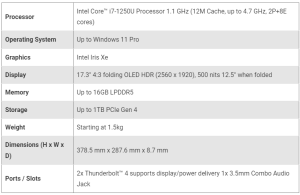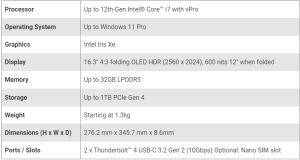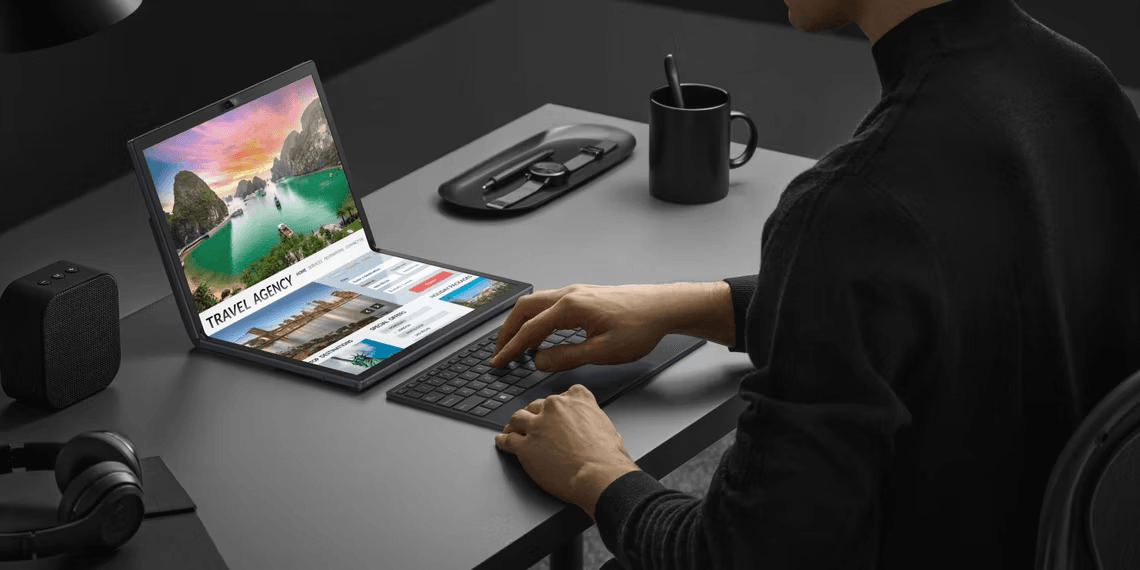Introduction to Foldable Laptop Screens
Foldable laptop screens have captured the imagination of tech enthusiasts, presenting a revolutionary approach to portable computing. Unlike conventional laptops, these devices feature flexible OLED displays that can seamlessly transition between large touchscreen tablets and more compact forms. As technology advances, manufacturers like Lenovo and Asus have introduced their versions of foldable laptops to the market, revolutionizing the way we interact with portable devices.
How Do Foldable Laptop Screens Function?
Foldable laptop screens leverage flexible OLED (Organic Light Emitting Diode) displays, constructed using cutting-edge ultra-thin glass technology. These displays use organic compounds that emit light when an electric current is applied, all within an extremely thin and pliable structure. The result is not only flexibility but also vibrant colors and impressive contrast ratios.
To enhance the user experience, foldable laptops integrate sophisticated software and hardware innovations. This enables the device to detect when the display is unfolded, adjusting key settings like touch sensitivity and display resolution to optimize usability. Manufacturers also provide software that maximizes the potential of various usage modes.
The durability and smooth operation of foldable laptops hinge on the quality of their hinges. A solid, well-designed hinge ensures seamless folding and unfolding of the display, minimizing strain on this critical component.
Comparison of Two Foldable Screen Laptops
The pioneer in the foldable laptop arena was the Lenovo X1 Fold, introduced in 2020. It utilized flexible display technology akin to that found in mobile phones. Building on this foundation, Asus joined the foldable laptop market with its Zenbook Fold. Lenovo later released an upgraded version of the X1 Fold, showcasing the rapid evolution of this technology.
Lenovo X1 Fold (2022)
In its 2022 iteration, the Lenovo X1 Fold features a 16.3″ flexible OLED display that transforms to 12″ when folded. The machine offers configurations with up to 32GB of DDR5 RAM, 12th-Gen Intel CPUs (including Core i7), and up to 1TB of internal storage. Its sleek design and powerful specifications make it a versatile companion for various tasks.

Asus Zenbook Fold
Asus, a newcomer in the foldable display laptop arena, introduced the Zenbook Fold. This device boasts a remarkable 17.3″ folding OLED display, compacting to 12.5″ when folded. The Zenbook Fold is equipped with features like an Intel Core i7-1250U Processor, up to 16GB LPDDR5 memory, and up to 1TB PCIe Gen 4 storage. It aims to provide a spacious screen for enhanced productivity.

Challenges and Alternatives in the Foldable Laptop Market
Despite their innovative design, foldable laptop screens are not without challenges. One prominent issue is the screen crease that appears where the display folds. While this primarily affects aesthetics, it’s a concern manufacturers are working to address. Additionally, foldable display laptops come at a premium, with prices not always proportional to the specifications they offer.
Durability remains a question mark due to the repetitive folding and unfolding of these devices. Manufacturers claim impressive folding cycle figures, but time will determine their actual longevity.
Alternatives to foldable displays include laptops with multiple inbuilt displays, such as the Apple MacBook Pro and Windows devices like the Asus Zenbook Duo. Another option is portable monitors that offer a dual-screen experience. For those seeking cost-efficiency, traditional laptops with single screens still provide better specifications for the price.
In Conclusion
Foldable laptop screens are pushing technological boundaries, offering a balance between expansive displays and portability. They come with companion accessories like keyboards and trackpads to cater to various user preferences. However, the technology is still in its early stages, with challenges like screen creases and durability to overcome. As the technology matures and prices become more accessible, foldable laptops have the potential to revolutionize portable computing, but widespread adoption may take time.




